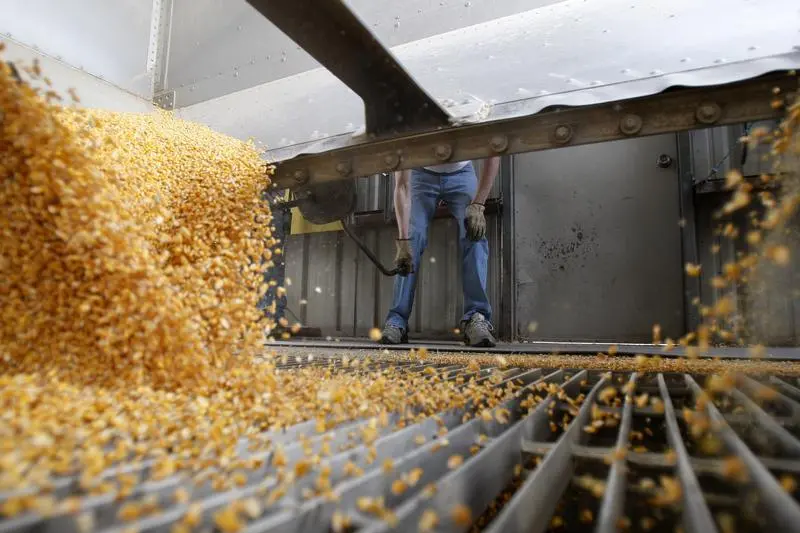PHOTO
NAPERVILLE, Illinois - U.S. corn prices have come under pressure this month amid predictions for a record crop, though a widespread dry stretch expected for the next two weeks has added back some weather premium, especially since drought conditions are already of concern.
Based on current drought coverage, five potential comparison years for 2023 arise: 2012, 2013, 2014, 2021 and 2022. Corn yield outcomes vary highly among this group, so key differences must be highlighted.
MAY DRYNESS
As of Tuesday, some 26% of U.S. corn areas were experiencing moderate or worse drought, the second-worst for the week after 29% in 2013. Records date to 2012, when 15% of corn areas were in at least moderate drought by this same week.
Around the same date in 2014, 2021 and 2022, moderate drought coverage spanned between 20% and 24% of U.S. corn areas.
This week’s Drought Monitor shows the most severe Corn Belt dryness in western areas including Kansas and Nebraska, most similar to the same weeks in 2013, 2014 and 2022. Dryness was less intense but more widespread in 2012, and it was concentrated in the Upper Plains in 2021.
For the U.S. corn market and especially with futures prices, 2013 has been a popular comparison for 2023, but soil moisture weakens that link. The central Corn Belt, including Iowa and Illinois, was very wet in May 2013 and mid-month corn planting in those states was very slow, though planting was quicker than normal this year.
May soil moisture maps make an excellent case for 2014, a scenario many corn farmers would root for. Very dry conditions gripped the central United States in May 2014, but above-average summer rainfall and slightly cool temperatures throughout the Corn Belt helped 2014 corn yield smash previous records.
Forecasts show the Corn Belt will be dry through the first week in June, then the models show chances for a pattern change, though the location and intensity are still in question. Adequate rainfall in July and August and moderate temperatures will be of top importance for corn’s success.
LATER ON
By late July 2012, some 85% of U.S. corn areas were in moderate or worse drought, but the next-worse for that week was 36% in 2021, which still marks the record for national corn yield.
The worst of the 2021 drought was concentrated in the Northern Plains, outside of the heaviest production areas. However, more than 50% of top grower Iowa was in moderate or worse drought in July and August 2021, though the state notched a record corn yield.
Summer 2021 was not wet for Iowa, but the lack of damaging heat and the timeliness of rains mattered. The western Corn Belt stayed dry and warm in summer 2022, pulling national corn yield below average despite a record in Illinois and strong showing from Iowa.
U.S. corn yield was catastrophic in 2012 as excessively dry and hot weather continued through the summer, but the 2013 result was average to slightly below despite very dry weather in the heart of the Corn Belt. It is likely that the pocket of initially strong soil moisture, especially in Iowa, helped combat the scarce rains later on.
Although 2012 is not the best current comparison, U.S. corn health started well that year with 72% in good or excellent condition at the end of May. The U.S. Department of Agriculture issues the first 2023 conditions on Tuesday.
ENSO
The presence of El Nino or La Nina in the equatorial Pacific Ocean may help narrow down some of the comparison years. El Nino is expected to be in place June-August 2023, but La Nina or borderline La Nina was present during that period in 2013, 2021 and 2022.
Borderline El Nino conditions lingered in the very opposite summers of 2012 and 2014. El Nino never formed in 2012, though it did in late 2014, sticking around throughout 2015 and leading into the 2015-16 super El Nino.
Strong U.S. corn yields occur more frequently during El Nino versus La Nina, though El Nino does not guarantee that outcome.
Since 1980, there have been six years with official El Nino conditions during June-August, and three of them featured below- average rainfall in the Midwest during July and August. The same is true for July-August rains in Nebraska.
Although the borderline El Nino in 2012 was bad for business, three other near-El Nino summers - 1994, 2004 and 2009 - featured some of the best U.S. corn crops ever harvested.
Karen Braun is a market analyst for Reuters. Views expressed are her own.
(Writing by Karen Braun Editing by Matthew Lewis)























